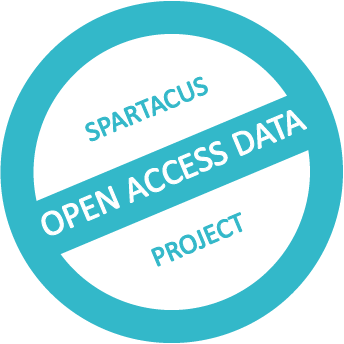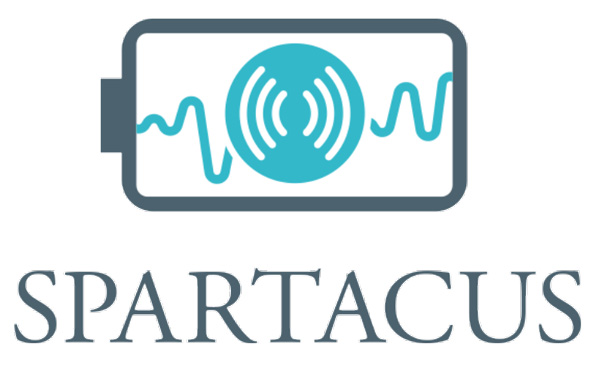
SPARTACUS – publishable deliverables and results
The SPARTACUS project, funded by the EU under the BATTERY 2030+ initiative, comprises a number of work packages.
Gain an overview with the public SPARTACUS project flyer.
To get more into detail, the publicly available deliverables to specific tasks are provided here.
For the download of the full text pdf documents please register with your e-mail and company name.
Newly published 2024
Project handbook
A project handbook is edited that is used as a guideline for SPARTACUS partners for interaction, decision, standardization, contact persons etc. The deliverable will be the project handbook with introductional comments explaining which important aspects were considered and if not, why.
Clustering activities report
This report describes the methodology to provide a concept to increase the impact of SPARTACUS on the community (battery community, consumer and academic community).
Impact assessment methodology
The interaction with other battery related LC-BAT projects, national and international initiatives and the coordination activities performed by CSA 2030+ will be described and the added value by these clustering activites is assessed.
Report on Life Cycle Cost of the smart batteries
This report investigates the development of smart batteries from an economical point of view, in particular by asssement of LCOE. This report will create a guideline for sensor development in which price regime the sensor costs and the integration costs might be for an economical advantage.
Report on environmental impacts of smart batteries
The effect of the smart batteries on environmental issues is analyzed and discussed in this deliverable. Although climate changing aspects play an important role, also further environmental gases and substance are evaluated that come from sensor materials or processing.
>3 smart battery cells V1 & report
This deliverable is the set-up of at least 3 smart battery cells in one package. This cell package will show the challenges that will be appearant when large cell packages are manufactured at a higher level in the project. This cell set-up is called V1
New 2023: Workshop Report
The aim of this document is to summarize the organized workshop and to share the latest developments in lithium-ion batteries advanced sensing between the different projects and interested industrial industries. The workshop was organized by CIDETEC Energy Storage and it was held in San Sebastian, during 21st and 22nd of June.
Table of Contents (24 pages)
1. INTRODUCTION
2. RESULTS AND DISCUSSION
I. Objectives
II. Design of the workshop
III. Speakers
IV. Attendance
V. Communication
3. CONCLUSION
4. DEGREE OF PROGRESS
Sensor specifications
Specifications for data pre-processing
CMS/BMS specifications
- Chapter 3 (CMS specifications): provides the specifications of the CMS, it also ensures that the integration with T1.2 (PP) is clearly defined.
- Chapter 4 (Module specifications): provides the specifications on how CMSs, cells, PP and ORP-EIS into modules.
- Chapter 5 (BMS specifications): provides the details on the BMS, in particular, how the BMS is interfaced to the module.
This document ensures that all the elements above can be integrated as planned.
Tests definition
In this document the test specifications are defined in order to test all the activity carried out in the project. The sensors developed in WP2 will be installed on the cell in WP3. The models developed in WP4 will be tested in order to manage the cell to minimize the aging. The electronic unit designed in WP5 will be used in order to test the aging of the cell. In this sense, this document aims to define the test specifications for long aging tests. This document is divided into three main sections:
- Test bench specifications: in this section the specification related to the set up are defined. Thus, the cell testing device, sensor information sharing, model execution and its input/outputs and the variables to save are defined, for a posterior study.
- Test specifications: in this section the aging tests are specified. Special attention is on fast charge, where the performance on fast charge (see chapter 3.2) is intended to improve while minimizing the aging. Fast charge will be studied at low and at high temperatures as well.
- Busive tests: the goal of this section is to define the abusive test and to analyse the sensor – model behaviour to analyse how this undesired situation is managed to minimize the consequences.
LCA Methodological Framework
- Development of new sensors design for smart batteries.
- Integration of the sensors according to industrial constraints.
- Data acquisition and data pre-processing for BMS integration.
- Modeling of failure mechanisms and correlation with battery states.
- Development of advanced BMS and standardization procedures.
- Economic and environmental assessment.
This report is part of Work Package (WP) 1 (“Specifications”), Task 1.5. This document presents the methodological framework to assess the environmental impacts and the Levelized Cost of Energy Storage (LCOES) of smart batteries and second life applications that will be performed in WP 6, in Tasks 6.1 and 6.3. Together, these tasks address the project’s objective 6, which targets the assessment of sensitized batteries’ economic and environmental effectiveness. These Tasks will evaluate if the increased cost of including sensors in LIB and their manufacturing’s environmental impacts will be compensated by LIB’s increased usability and qualification for a second-life use.

Got any questions? Don’t hesitate to contact us!
Project Coordinator
Gerhard Domann Fraunhofer ISC gerhard.domann@isc.fraunhofer.de ————————————————–
Dissemination Manager
Marie-Luise Righi Fraunhofer ISC marie-luise.righi@isc.fraunhofer.de
